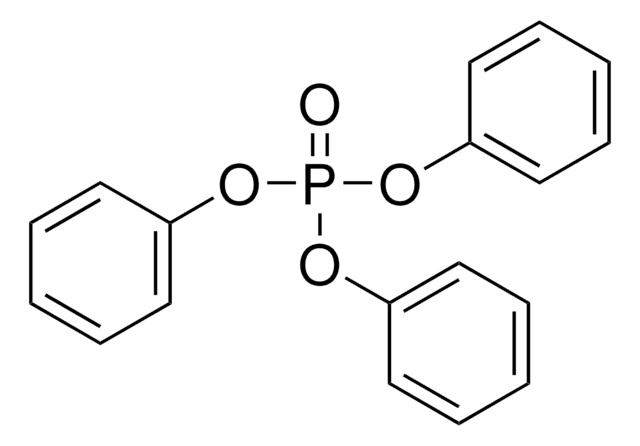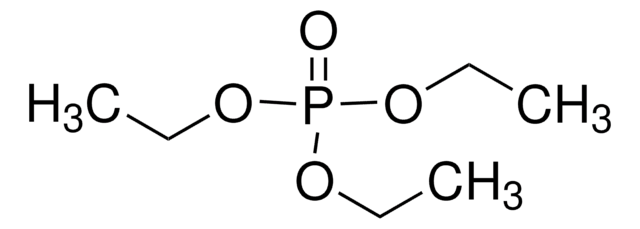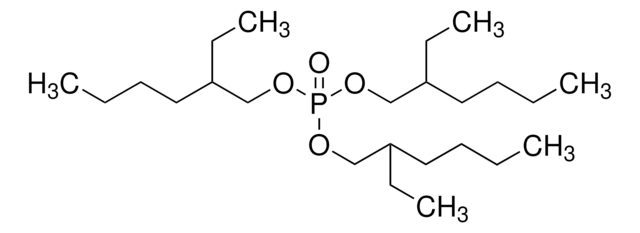240494
Fosfato de tributilo
≥99%
Sinónimos:
TBP, TBPA
About This Item
Productos recomendados
densidad de vapor
9.2 (vs air)
Nivel de calidad
presión de vapor
27 mmHg ( 178 °C)
7.3 mmHg ( 150 °C)
Análisis
≥99%
formulario
liquid
índice de refracción
n20/D 1.424 (lit.)
bp
180-183 °C/22 mmHg (lit.)
solubilidad
organic solvents: miscible
water: soluble (1mL in 165mL)
cadena SMILES
CCCCOP(=O)(OCCCC)OCCCC
InChI
1S/C12H27O4P/c1-4-7-10-14-17(13,15-11-8-5-2)16-12-9-6-3/h4-12H2,1-3H3
Clave InChI
STCOOQWBFONSKY-UHFFFAOYSA-N
¿Está buscando productos similares? Visita Guía de comparación de productos
Descripción general
Tributyl phosphate (TBP) is an organophosphate compound widely used as an extraction solvent, flame retardant, and plasticizer.
Aplicación
Palabra de señalización
Warning
Frases de peligro
Consejos de prudencia
Clasificaciones de peligro
Acute Tox. 4 Oral - Aquatic Chronic 3 - Carc. 2 - Skin Irrit. 2
Código de clase de almacenamiento
10 - Combustible liquids
Clase de riesgo para el agua (WGK)
WGK 2
Punto de inflamabilidad (°F)
293.0 °F - closed cup
Punto de inflamabilidad (°C)
145 °C - closed cup
Equipo de protección personal
Eyeshields, Faceshields, Gloves, type ABEK (EN14387) respirator filter
Elija entre una de las versiones más recientes:
¿Ya tiene este producto?
Encuentre la documentación para los productos que ha comprado recientemente en la Biblioteca de documentos.
Los clientes también vieron
Nuestro equipo de científicos tiene experiencia en todas las áreas de investigación: Ciencias de la vida, Ciencia de los materiales, Síntesis química, Cromatografía, Analítica y muchas otras.
Póngase en contacto con el Servicio técnico













